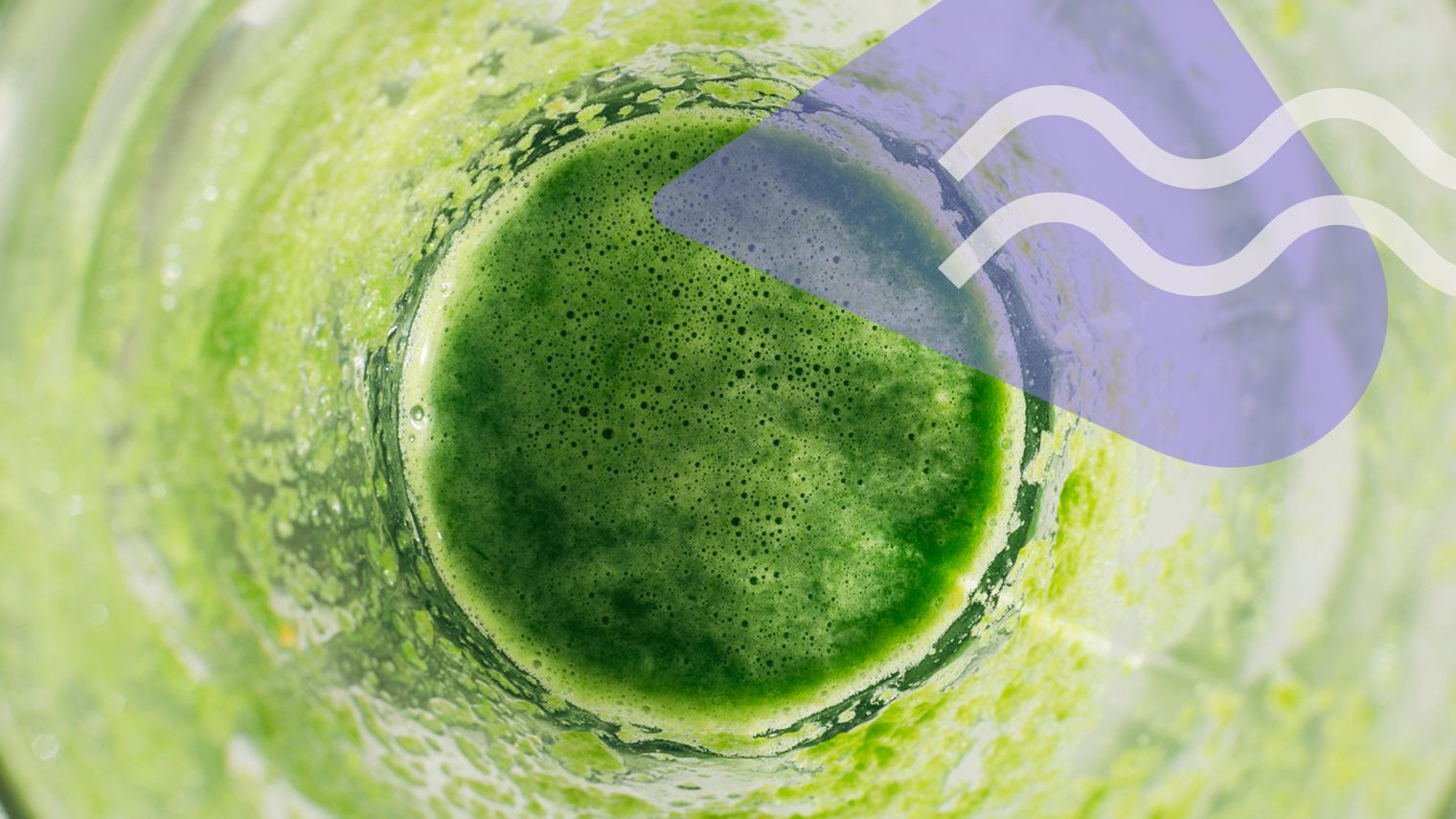I Tried Juicing for My Crohn’s Disease
April 11, 2023
Content created for the Bezzy community and sponsored by our partners. Learn More

Photography by Kristin Duvall/Stocksy United
I wanted the nutrients of fibrous fruits and vegetables without the inflammatory effects. Juicing once a day has made it easier for me.
If you’re anything like me, you might constantly see new wellness trends popping up all over the place, like a new fitness craze on TikTok or a magazine article about the “perfect” supplement for more energy.
But, speaking as someone with Crohn’s disease — a type of inflammatory bowel disease (IBD) — making diet and lifestyle changes can be scary.
Because the condition is so unpredictable, there’s no way of knowing if some new wellness trend will make our symptoms better or worse. That means we need to speak to our doctor before trying anything new, in case it could interact with medications or worsen our condition.
So many vegetables are trigger foods for me — especially the kind high in fiber that are often recommended for good gut health. I felt guilty that I couldn’t eat them, and wondered if juicing could be an alternative?
With all this in mind, it was with a little trepidation that I first tried juicing.
But why? Well, my juicing journey was largely motivated by the fact that so many vegetables are trigger foods for me, including celery, cucumber, peppers, and kale. Even worse, these veggies are exactly the type often recommended for good gut health — the kind high in insoluble fiber, an indigestible type of carbohydrate that bulks out our stool and improves our gut microbiome.
As a result, I found it hard to get in my five a day. I’m not alone, though. These fibrous veggies are common trigger foods during a flare-up, according to the Crohn’s and Colitis Foundation.
Still, I often felt guilty that I couldn’t eat “healthier” foods and wondered if juicing could be an alternative.
I had read that juicing could be a way to potentially get the nutrients and other benefits of fruits and vegetables in my diet without having to deal with all the ill effects that come with eating them whole. That’s because juicing machines remove a lot of the pulp (and therefore fiber), and you are left with a smooth liquid drink.


How I started juicing
Before I began, I spoke with my IBD team. They had no objections to me trying juicing, as long as it was as a complement to my usual diet rather than as a replacement for it.
That’s because juice alone would not contain everything I needed for a balanced diet, such as fat and protein. So my aim was not to replace food with juice long term or to lose weight, but hopefully to just reap whatever nutritional bonus I could from the fruits and veggies.
Whenever I’m flaring or feeling unwell, I usually adhere to a mainly liquid diet for a few days to allow my gut to rest and reset. So, I did that for my first few days of juicing, too.
I drank several juices a day, followed by a lunch and dinner of a soup I regularly make that contains bone broth and my ‘go-to’ vegetables (sweet potato, carrots, and potato) cooked and blended. I gradually introduced food back in a manner similar to an elimination diet.
However, from those first few days onward, I stuck to my usual diet and added one 8-ounce cup of juice each day before breakfast. (I haven’t found any scientific evidence for it, but many anecdotal reports suggest it’s best to drink juice on an empty stomach for optimal digestion, so that’s what I do.) I then have my breakfast about a half-hour later.
One month later, I’m still juicing daily!
What I drink
I drink a mix of different juices, but I do tend to use the same core ingredients.
For fruits, I’ve found apples and pineapple the easiest to juice. For vegetables, I’ve tried carrots, kale, spinach, celery, cucumbers, and peppers (yes, really, peppers!).
Because fruit juices can contain a lot of sugar, I try to stick to a fruit-to-vegetable ratio of 1:3. I quickly discovered that using an apple can mask any bitter taste from most vegetables — yes, even from peppers and celery!
The positive effects of juicing
Firstly, it’s about mindset. I’m excited to finally be able to consume more fruit and vegetables in a form that works for me. That’s something the average person might not get excited about but, when your diet is restricted, it can be really frustrating to feel like you can’t always make the healthiest choices.
For me, it allows me to start the day positively by putting something nutritious into my body.
Even better, juicing has actually seemed to help some of my IBD symptoms. I’ve noticed an increase in energy, especially first thing in the morning and again around 11 a.m. when I would previously flag.
It also seems to have helped with my brain fog. I feel like I’m able to think more clearly. Juicing also seems to have reduced the number of toilet trips I make in the morning.
A minor inconvenience
Thankfully, juicing hasn’t caused me any negative symptoms so far. I have tolerated a much wider range of fruits and vegetables than I could in their whole form. (Though I do find too much pineapple in a juice can cause me stomach cramps!)
The only downside has been the preparation that juicing requires, like peeling and chopping the fruit and vegetables. I also have to clean the juicer after each use, and that can get tedious. It’s also a bit expensive to constantly buy more fresh fruit and vegetables. This hasn’t put me off juicing, however!
I know I still need to work toward consuming more fiber, since it has lots of health benefits, but juicing is definitely one habit I’ll be sticking to.
My top 5 tips for juicing with IBD
- Start your juicing journey with one or two of your favorite fruits and vegetables. Expand the number gradually so you can pinpoint any triggers.
- Remember that juicing can’t fully replace eating fruit and vegetables whole, so still aim to eat as many of these as you safely can.
- Set a consistent time each day to have your juice so you stick to the habit. I usually drink my juice in the morning, but when you choose to do so is up to you.
- I usually drink just one juice a day, but if you plan to drink more, be careful to opt for juices that use mainly vegetables to ensure you don’t consume too much fruit sugar.
- Look for a juicer that is easy to take apart to clean and use, so you’ll be motivated to use it!
The takeaway
While juicing isn’t a magic formula for helping IBD, I was surprised at how many benefits it personally brought me.
It goes without saying that everyone is different. Always speak to your medical team before making diet changes when living with IBD.
Medically reviewed on April 11, 2023
1 Source


Like the story? React, bookmark, or share below:
Have thoughts or suggestions about this article? Email us at article-feedback@bezzy.com.
About the author